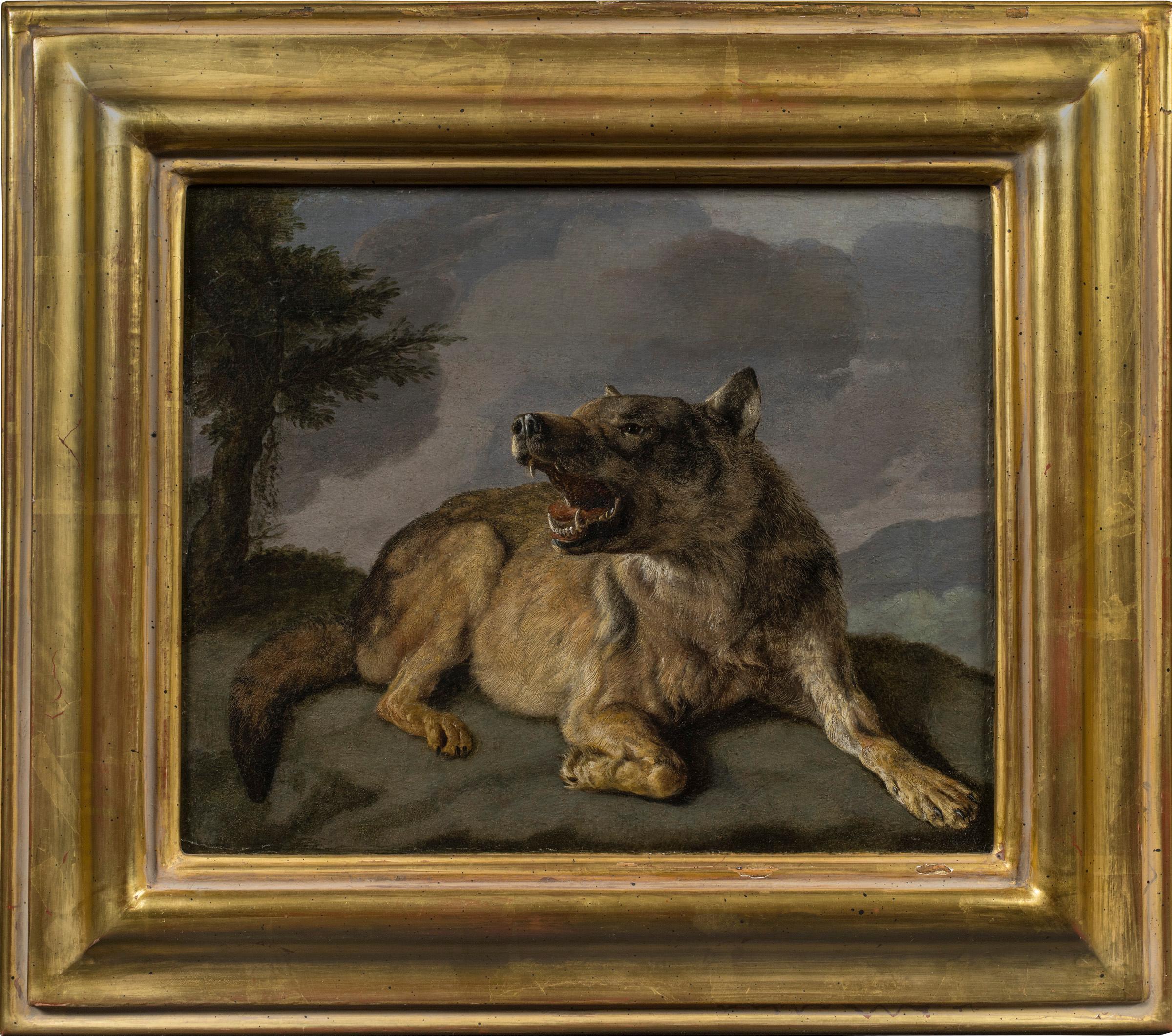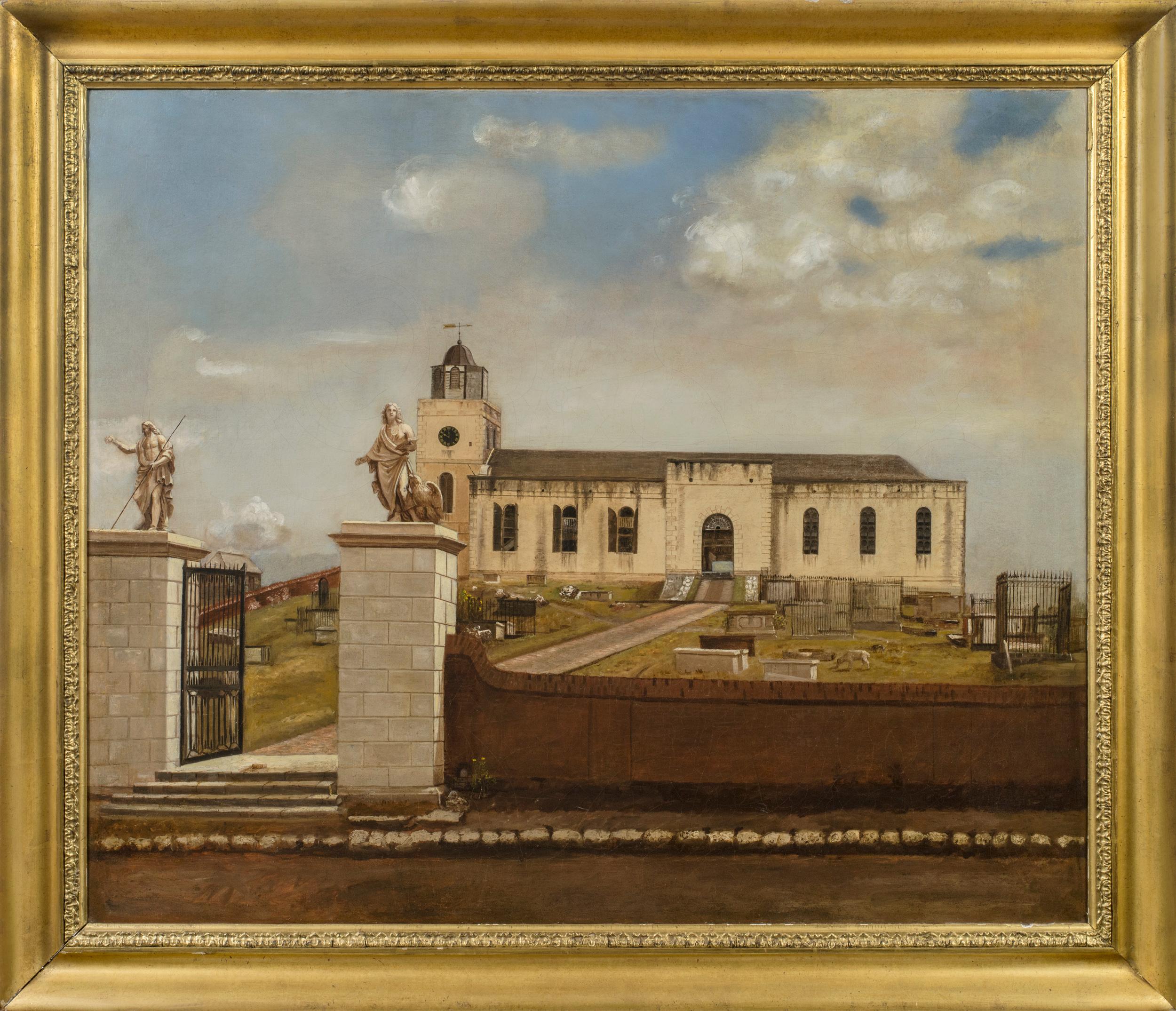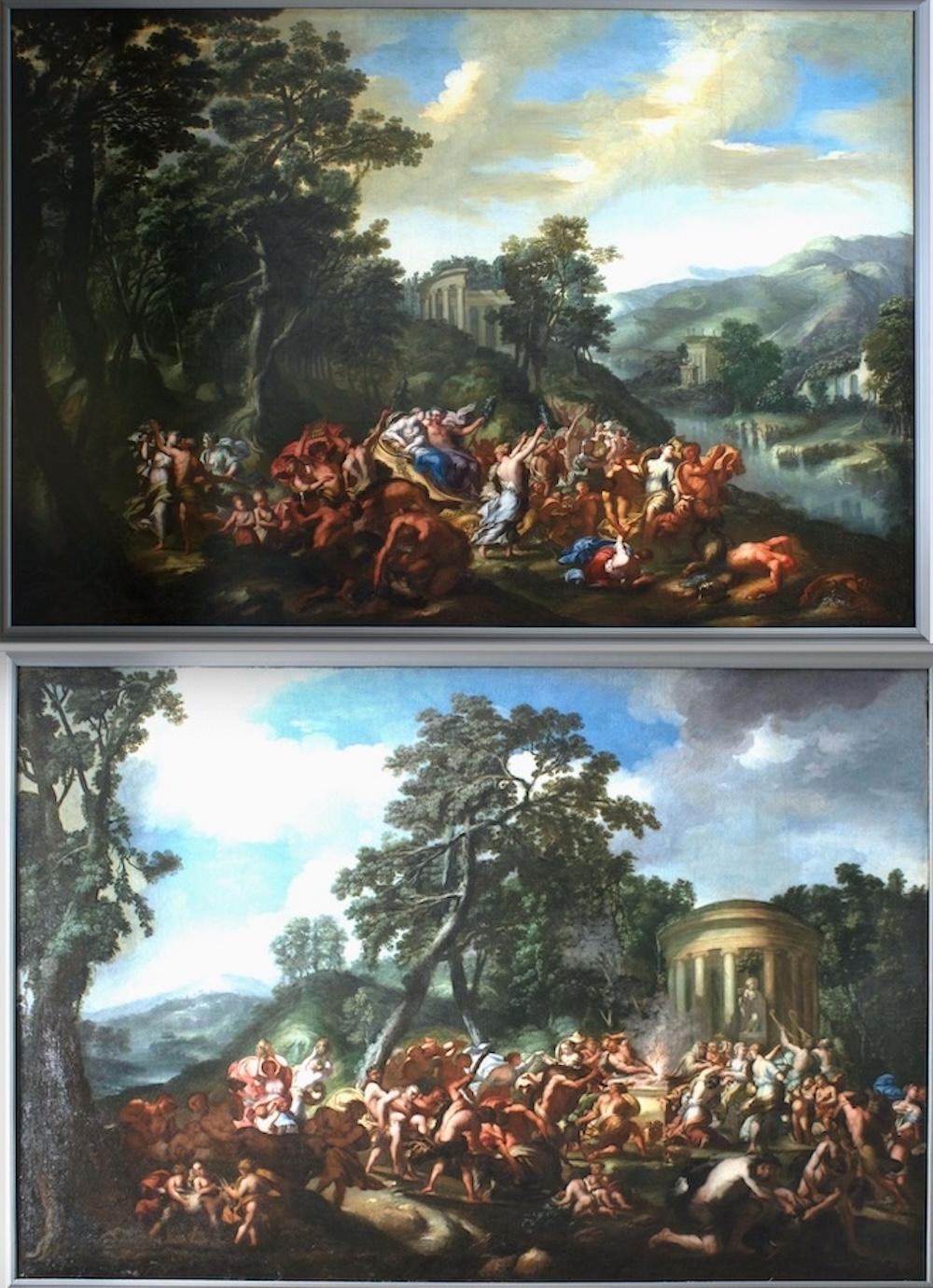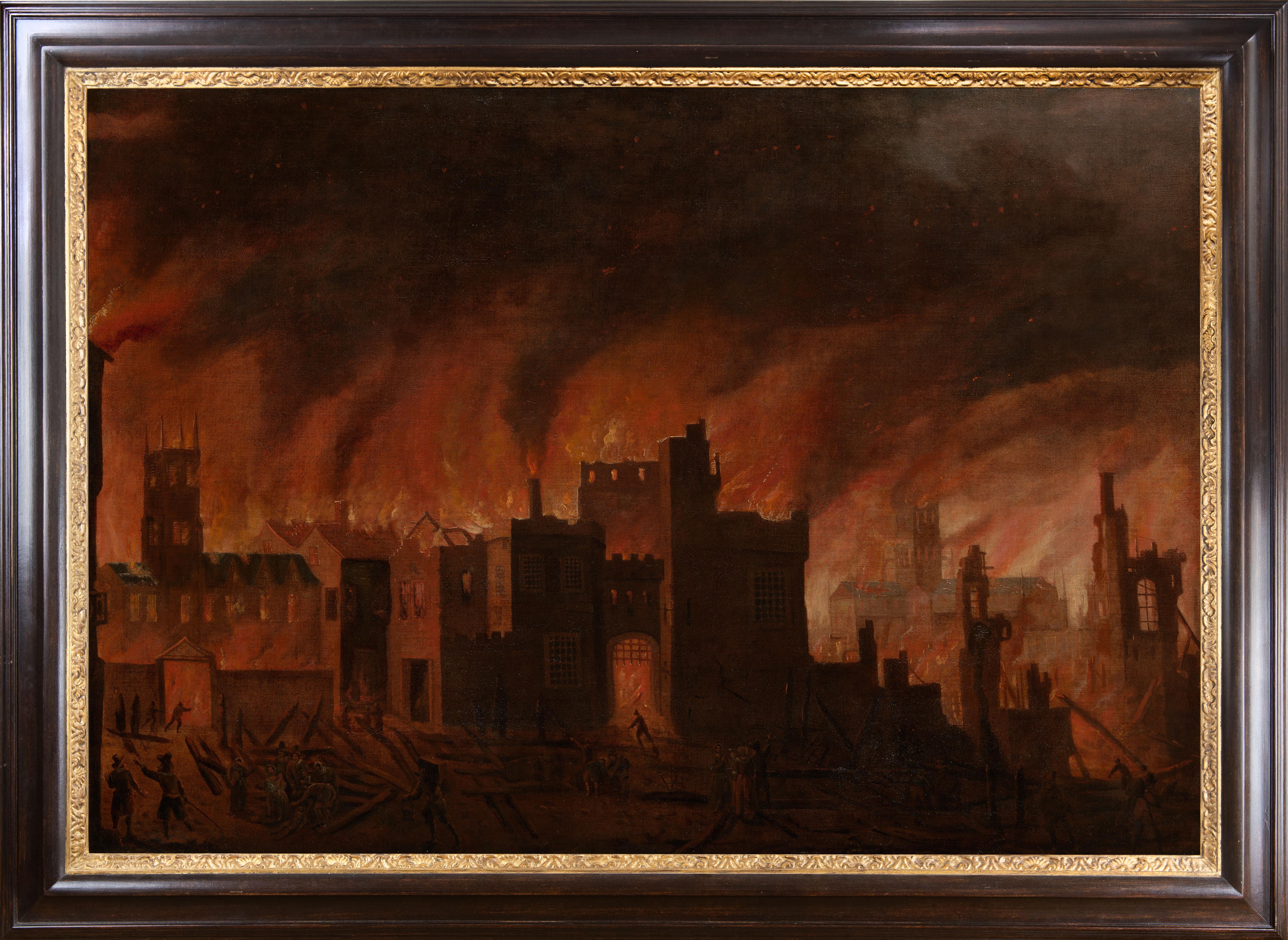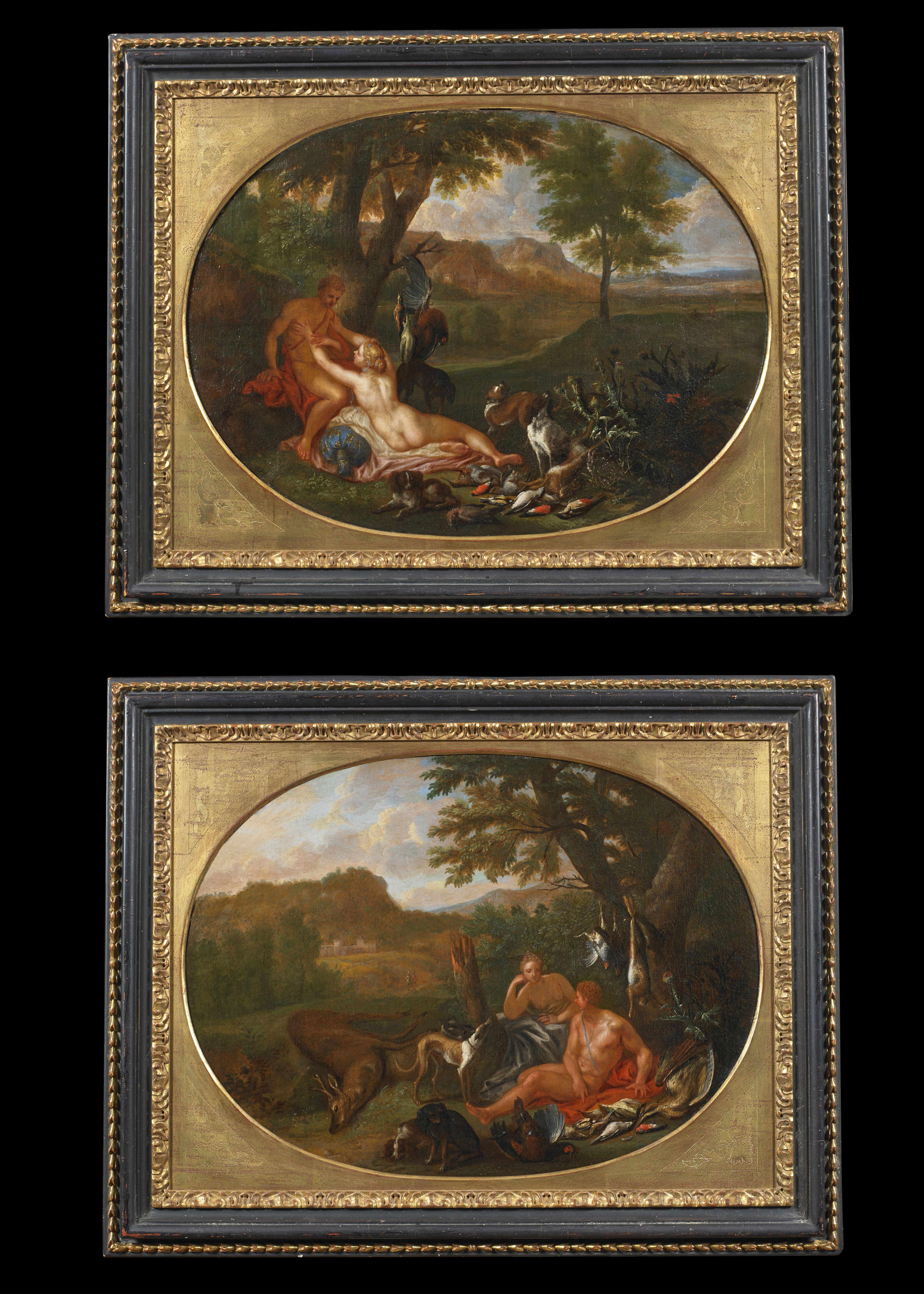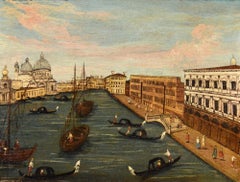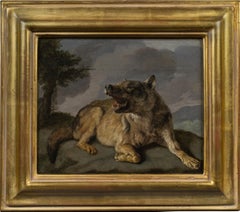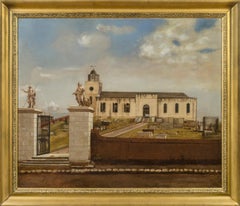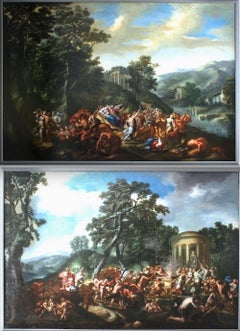Jupiter Callisto Netscher Paint Oil on canvas Old master 17/18th Century Flemish
View Similar Items
Want more images or videos?
Request additional images or videos from the seller
1 of 21
Jupiter Callisto Netscher Paint Oil on canvas Old master 17/18th Century Flemish1670-1730
1670-1730
Price:$4,000
$6,051.94List Price
About the Item
- Creation Year:1670-1730
- Dimensions:Height: 29.93 in (76 cm)Width: 24.02 in (61 cm)
- Medium:
- Movement & Style:
- Circle Of:Gaspar Netscher (Heidelberg, 1639 - The Hague, 1684) (1639 - 1684)
- Period:
- Condition:
- Gallery Location:Riva del Garda, IT
- Reference Number:1stDibs: LU988111622072
About the Seller
4.9
Platinum Seller
Premium sellers with a 4.7+ rating and 24-hour response times
Established in 2017
1stDibs seller since 2018
256 sales on 1stDibs
Authenticity Guarantee
In the unlikely event there’s an issue with an item’s authenticity, contact us within 1 year for a full refund. DetailsMoney-Back Guarantee
If your item is not as described, is damaged in transit, or does not arrive, contact us within 7 days for a full refund. Details24-Hour Cancellation
You have a 24-hour grace period in which to reconsider your purchase, with no questions asked.Vetted Professional Sellers
Our world-class sellers must adhere to strict standards for service and quality, maintaining the integrity of our listings.Price-Match Guarantee
If you find that a seller listed the same item for a lower price elsewhere, we’ll match it.Trusted Global Delivery
Our best-in-class carrier network provides specialized shipping options worldwide, including custom delivery.More From This Seller
View AllAlexander The Great Persians Fontebasso 18th Century Paint Oil on canvas
Located in Riva del Garda, IT
Francesco Fontebasso
(Venice 1709 - Venice 1769)
Alexander the Great grants clemency to the Persians
Oil on canvas
108 x 153 cm.
In frame 120 x 164 cm.
Fascinating for its interest...
Category
18th Century Old Masters Paintings
Materials
Oil
$17,881 Sale Price
20% Off
Venice San Giorgio Marina Canaletto 19th Century Paint Oil on canvas Old master
Located in Riva del Garda, IT
View of Venice with the Island of San Giorgio Maggiore
Follower of Canaletto (Venice, 1697 – Venice, 1768)
Venice - 19th century
oil on canvas
29 x 39 cm. - Framed 40 x 50 cm.
Wel...
Category
19th Century Old Masters Paintings
Materials
Oil
$4,693 Sale Price
20% Off
Port Moonlight See Landscape Grevenbroeck Paint 17th Century Oil on canvas
Located in Riva del Garda, IT
Giovanni Grevenbroeck, called the Solfarolo (Netherlands, c. 1650 - Milan, post 1699)
Port View in Moonlight
Oil on canvas
70 x 132 cm
Framed 86 x 146 cm
Critical apparatus: Exper...
Category
17th Century Old Masters Paintings
Materials
Oil
$10,992 Sale Price
20% Off
View Venice Grand Canal See Landscape 18th Century Paint Oil on canvas Venice
Located in Riva del Garda, IT
Vedutist painter of the 18th century
View of Venice with the Grand Canal, the Punta della Dogana with the Basilica of Santa Maria della Salute on the left, the Palazzo Della Zecca wi...
Category
18th Century Old Masters Paintings
Materials
Oil
Winter Landscape Foschi Paint 18th CEntury Paint Oil on canvas Old master Italy
Located in Riva del Garda, IT
Francesco Foschi (Ancona, 1710 - Rome, 1780) Attributable
Winter landscape
Oil on canvas
76 x 63 cm. - In frame 87 x 75 cm.
The compositional and stylistic elements of this pleasan...
Category
18th Century Old Masters Paintings
Materials
Oil
$6,051 Sale Price
20% Off
Battle Horsemen Landscape Graziani Paint Oil on canvas 17th Century Old master
Located in Riva del Garda, IT
Francesco Graziani, known as Ciccio Napoletano
(active in Naples and Rome in the second half of the 17th century)
Battle with clash of horsemen
Oil on canvas
95 x 130 cm
In period ...
Category
17th Century Old Masters Paintings
Materials
Oil
$10,992 Sale Price
20% Off
You May Also Like
A Wolf
Located in New York, NY
Provenance:
The Marchesi Strozzi, Palazzo Strozzi, Florence
Sale, Christie’s, London, May 20, 1993, lot 315, as by Carl Borromaus Andreas Ruthart...
Category
17th Century Old Masters Animal Paintings
Materials
Canvas, Paper, Oil
View of St. John’s Cathedral, Antigua
Located in New York, NY
Provenance:
Robert Hollberton, Antigua, ca. 1841
Private Collection, New York
The present painting depicts Old St. John’s Cathedral on the island of Antigua. The church was erected in the 1720s on the designs of the architect Robert Cullen. It measured 130 feet by 50 feet with north and south porches 23 x 20 ½ feet. The tower, 50 feet high with its cupola, was added in 1789. The church was elevated to the status of a cathedral, but disaster struck in the form of an earthquake that destroyed the building on 8 February 1843. A memorandum of that date relates the event:
“On Wednesday, 8th February, 1843, this island was visited by a most terrific and destructive earthquake. At twenty minutes before eleven o’clock in the forenoon, while the bell was ringing for prayers, and the venerable Robert Holberton was in the vestry-room, awaiting the arrival of persons to have their marriage solemnized, before the commencement of the morning service, the whole edifice, from one end to the other, was suddenly and violently agitated. Every one within the church, after the first shock, was compelled to escape for his life. The tower was rent from the top to the bottom; the north dial of the clock precipitated to the ground with a dreadful crash; the east parapet wall of the tower thrown upon the roof of the church; almost the whole of the north-west wall by the north gallery fell out in a mass; the north-east wall was protruded beyond the perpendicular; the altar-piece, the public monument erected to the memory of lord Lavington, and the private monuments, hearing the names of Kelsick, Warner, Otley, and Atkinson, fell down piecemeal inside; a large portion of the top of the east wall fell, and the whole of the south-east wall was precipitated into the churchyard, carrying along with it two of the cast-iron windows, while the other six remained projecting from the walls in which they had been originally inserted; a large pile of heavy cut stones and masses of brick fell down at the south and at the north doors; seven of the large frontpipes of the organ were thrown out by the violence of the shock, and many of the metal and wooden pipes within displaced; the massive basin of the font was tossed from the pedestal on which it rested, and pitched upon the pavement beneath uninjured. Thus, within the space of three minutes, this church was reduced to a pile of crumbling ruins; the walls that were left standing being rent in every part, the main roof only remaining sound, being supported by the hard wood pillars.”
The entrance from the southern side into the cathedral, which was erected in 1789, included two imposing statues, one of Saint John the Divine and the other of Saint John the Baptist in flowing robes. It is said that these statues were confiscated by the British Navy from the French ship HMS Temple in Martinique waters in 1756 during the Seven Years’ War and moved to the church. The statues are still in situ and can be seen today, much as they appeared in Bisbee’s painting, but with the new cathedral in the background (Fig. 1).
Little is known of the career of Ezra Bisbee. He was born in Sag Harbor, New York in 1808 and appears to have had a career as a political cartoonist and a printmaker. His handsome Portrait of President Andrew Jackson is dated 1833, and several political lithographs...
Category
19th Century Old Masters Landscape Paintings
Materials
Canvas, Oil
Outstanding 18' century Paintings The Wedding Feast of Bacchus and Ariadne
Located in Rome, IT
Pair of large painting oil on canvas with the Wedding Feast of Bacchus and Ariadne scene .
Italy 18' century .
Amazing landscape background and roman Temple with classical archite...
Category
Early 18th Century Old Masters Figurative Paintings
Materials
Oil
Pair of Italian 18' century Paintings with Gardens
Located in Rome, IT
Pair of Italian 18' century paintings , oil on canvas with Venetian Palace gardens , antiques sculptures and various figures .
Measurements with frame cm 75 x101
Category
Mid-18th Century Old Masters Landscape Paintings
Materials
Oil
Pair of Italian 18' century Paintings with Gardens
Located in Rome, IT
Pair of Italian 18' century paintings , oil on canvas with Venetian Palace gardens , antiques sculptures and various figures .
Measurements with frame cm 75 x101
Category
Mid-18th Century Old Masters Landscape Paintings
Materials
Oil
Pair of Italian 18' century Paintings with Gardens
Located in Rome, IT
Pair of Italian 18' century paintings , oil on canvas with Venetian Palace gardens , antiques sculptures and various figures .
Measurements with f...
Category
Mid-18th Century Old Masters Landscape Paintings
Materials
Oil
Recently Viewed
View AllMore Ways To Browse
Van Hunt
Greyhound Oil Painting
Forest Nymph
Antique Greyhound Painting
Diana Painting 17th Century
Diana Of The Hunt Painting
Diana Painting 18th Century
Oil Canvas Greyhounds
Caspar Netscher
Italian Greyhound Painting
Madame De Montespan
Mary Gaspar
Church Painting
Framed Oil Painting Of Flowers
Dot Art
The Above Gallery
Motion Painting
Horse Frame
